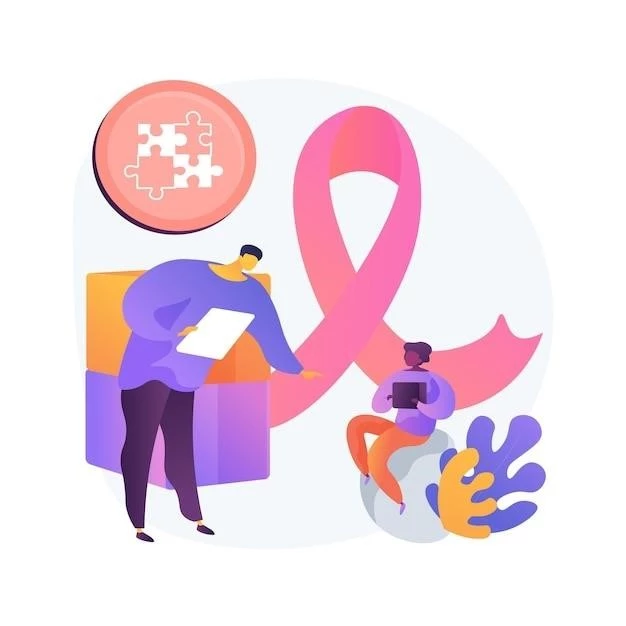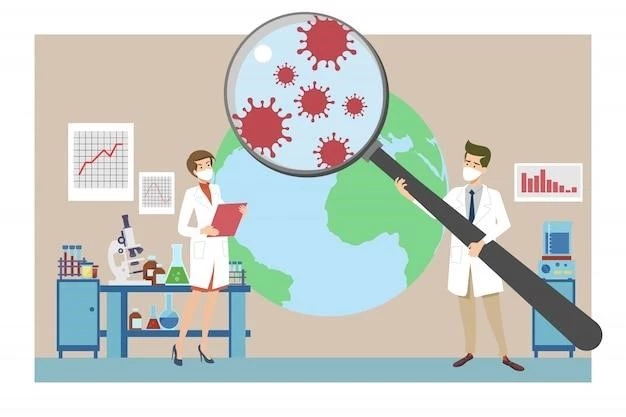Disease ⎼ Leishmaniasis
Leishmaniasis is a disease caused by parasites of the Leishmania genus. It is transmitted through the bite of infected sandflies. The disease can manifest in different forms, including cutaneous, mucocutaneous, and visceral. Prompt diagnosis is crucial for effective treatment.
I. Introduction to Leishmaniasis
Leishmaniasis is a disease caused by protozoan parasites of the Leishmania genus. These parasites are transmitted to humans and animals through the bite of infected female phlebotomine sandflies, which are found in endemic regions around the world. Leishmaniasis is prevalent in tropical and subtropical areas, with over 90 countries affected. The disease can present itself in different clinical forms, including cutaneous, mucocutaneous, and visceral.
Leishmaniasis poses a significant public health challenge, particularly in developing countries with limited resources for prevention and treatment. The impact of the disease extends beyond health, affecting socio-economic development in endemic regions. Understanding the epidemiology, transmission dynamics, and clinical manifestations of leishmaniasis is crucial for effective prevention, diagnosis, and treatment.
Various factors contribute to the spread of leishmaniasis, including environmental changes, urbanization, and climate variability. The disease affects vulnerable populations living in poverty, conflict-affected areas, and regions with inadequate healthcare infrastructure. Control measures such as vector control, early case detection, and treatment are essential for reducing the burden of leishmaniasis.
Research efforts continue to focus on developing new strategies for leishmaniasis prevention and control. Collaboration between scientists, healthcare professionals, and policymakers is essential for advancing knowledge about the disease and implementing effective interventions. Increased awareness, funding, and advocacy are necessary to address the global health impact of leishmaniasis.
II. Causes and Transmission
Leishmaniasis is caused by protozoan parasites of the Leishmania genus, which are transmitted to humans through the bite of infected female phlebotomine sandflies. These sandflies become infected with Leishmania parasites by feeding on infected animals, such as rodents, dogs, or other mammals that serve as reservoir hosts.
Once inside the human body, the Leishmania parasites infect and multiply within immune cells called macrophages, leading to the characteristic symptoms of leishmaniasis. The transmission of the disease is closely linked to the presence of susceptible sandfly vectors in endemic regions and the interaction between infected sandflies, reservoir hosts, and humans.
Various factors contribute to the transmission of leishmaniasis, including environmental conditions that support sandfly breeding and feeding activities. Deforestation, urbanization, and climate change can also impact the distribution and abundance of sandflies, increasing the risk of disease transmission to humans.
Preventive measures such as vector control, using insecticidal sprays, bed nets, and environmental modifications, are essential for reducing the spread of leishmaniasis. Additionally, early detection and treatment of human cases can help prevent further transmission of the disease within communities.
Understanding the complex interplay between parasites, sandfly vectors, reservoir hosts, and environmental factors is crucial for developing effective control strategies for leishmaniasis. Research into the genetic diversity of Leishmania parasites, the behavior of sandfly vectors, and the immune response of infected individuals is ongoing to improve our knowledge of the causes and transmission dynamics of the disease.
III. Symptoms and Diagnosis
The symptoms of leishmaniasis vary depending on the form of the disease. In cutaneous leishmaniasis, skin ulcers, nodules, or papules may appear at the site of the sandfly bite. Mucocutaneous leishmaniasis affects mucous membranes in the nose, mouth, and throat, leading to tissue destruction. Visceral leishmaniasis, also known as kala-azar, affects internal organs such as the spleen, liver, and bone marrow.
Diagnosing leishmaniasis involves a combination of clinical evaluation, laboratory tests, and parasite identification. Healthcare providers may perform a physical examination to assess skin lesions or enlarged organs in patients with suspected leishmaniasis. Laboratory tests such as polymerase chain reaction (PCR) and serological assays can detect Leishmania parasites in tissue samples or blood.
For cutaneous leishmaniasis, a biopsy of the skin lesion may be necessary to identify the parasite under a microscope. In cases of visceral leishmaniasis, bone marrow aspiration or spleen biopsy can confirm the presence of Leishmania parasites. Serological tests measure the levels of specific antibodies against Leishmania in the blood, aiding in the diagnosis of the disease;
Early diagnosis of leishmaniasis is essential for initiating timely treatment and preventing complications. Delayed or misdiagnosed cases can lead to severe manifestations of the disease and increased mortality rates. Healthcare providers in endemic regions should be trained to recognize the clinical symptoms of leishmaniasis and implement diagnostic procedures promptly.
Research into novel diagnostic techniques, such as rapid diagnostic tests and point-of-care assays, aims to improve the early detection of leishmaniasis in resource-limited settings. Collaboration between healthcare professionals, researchers, and public health authorities is critical for enhancing diagnostic capacities and monitoring the spread of the disease.
IV. Treatment Options
Treatment for leishmaniasis depends on the clinical form of the disease and the severity of symptoms. In mild cases of cutaneous leishmaniasis, localized skin lesions may heal on their own over time without specific treatment. Topical treatments such as ointments or cryotherapy can help speed up the healing process and reduce scarring.
For moderate to severe cases of cutaneous leishmaniasis or other forms of the disease, systemic drug therapy is required. The most common drugs used to treat leishmaniasis are antimonials, such as sodium stibogluconate and meglumine antimoniate. These medications target the parasite and help clear the infection from the body.
In cases of visceral leishmaniasis, systemic drug therapy with medications like amphotericin B or miltefosine is essential for treating the infection and preventing complications. Treatment regimens may vary in duration and dosage depending on the patient’s age, weight, and overall health status. Close monitoring by healthcare providers is necessary to ensure treatment efficacy and patient safety.

Drug resistance and treatment failure pose challenges to the effective management of leishmaniasis. Research into new drug formulations, combination therapies, and novel treatment strategies is ongoing to address these issues and improve patient outcomes. Collaboration between pharmaceutical companies, researchers, and public health agencies is crucial for developing and implementing innovative treatment options for leishmaniasis.
In addition to drug therapy, supportive care such as wound care, pain management, and nutritional support may be necessary for patients with severe forms of the disease. Surgical intervention may be required in cases of mucocutaneous leishmaniasis to repair tissue damage and improve quality of life. Multidisciplinary teams involving infectious disease specialists, dermatologists, and surgeons play a key role in managing complex cases of leishmaniasis.
V. Global Impact of Leishmaniasis
Leishmaniasis is a neglected tropical disease that affects millions of people worldwide, particularly in resource-limited regions with poor healthcare infrastructure. The disease has a significant impact on public health, causing morbidity, disability, and mortality in endemic areas. Visceral leishmaniasis, in particular, can be fatal if left untreated.
The economic burden of leishmaniasis extends beyond healthcare costs, affecting productivity, education, and socio-economic development in endemic communities. The disease primarily affects rural populations engaged in agricultural activities, further exacerbating poverty and food insecurity in affected regions.
Efforts to control leishmaniasis face challenges such as limited access to healthcare services, lack of diagnostic tools, drug resistance, and inadequate funding for research and development. Prevention strategies, including vector control, educational campaigns, and community engagement, are essential for reducing the transmission of the disease and improving health outcomes.
Global initiatives such as the World Health Organization’s (WHO) strategy for neglected tropical diseases aim to raise awareness about leishmaniasis, mobilize resources, and support research to accelerate progress towards disease elimination. Sustainable control programs, interdisciplinary collaborations, and advocacy efforts are essential for addressing the global impact of leishmaniasis.
Research into vaccines, new drug therapies, and innovative diagnostic tools is critical for improving the prevention and treatment of leishmaniasis on a global scale. By prioritizing investments in research and strengthening healthcare systems in endemic regions, the international community can work towards achieving the Sustainable Development Goals related to health and well-being.
VI. Research and Development
Research and development efforts in the field of leishmaniasis focus on advancing our understanding of the disease, developing new treatment options, and improving diagnostic tools for better patient care. Scientists and healthcare professionals collaborate to address the challenges posed by leishmaniasis and work towards sustainable solutions.
One area of research involves studying the genetic diversity of Leishmania parasites to identify potential drug targets and mechanisms of drug resistance. By unraveling the genetic makeup of the parasites, researchers aim to develop novel therapies that can effectively eradicate the infection and improve treatment outcomes.
Another focus of research is the development of vaccines against leishmaniasis. Vaccines have the potential to provide long-lasting immunity against the disease and prevent transmission in endemic areas. Scientists investigate different vaccine candidates, including live attenuated vaccines, subunit vaccines, and DNA vaccines, to identify the most effective approaches for disease prevention.
Diagnostic research aims to enhance the early detection of leishmaniasis through the development of rapid and accurate testing methods. Point-of-care tests, molecular diagnostic tools, and serological assays are under investigation to improve the efficiency of diagnosing the disease in resource-limited settings where laboratory infrastructure is limited.
Collaboration between academia, pharmaceutical companies, government agencies, and non-governmental organizations is essential for driving research and development initiatives in leishmaniasis. By sharing knowledge, resources, and expertise, stakeholders can accelerate progress towards the control and elimination of the disease.
Funding agencies play a crucial role in supporting research projects aimed at combating leishmaniasis. Sustainable financing mechanisms, grant opportunities, and investment in research capacity-building are needed to sustain the momentum in developing new interventions and addressing emerging challenges in leishmaniasis control.
Ultimately, research and development efforts play a key role in shaping the future of leishmaniasis control and elimination. Through innovation, collaboration, and investment in scientific advancements, the global community can work towards reducing the burden of leishmaniasis and improving health outcomes for affected populations.
